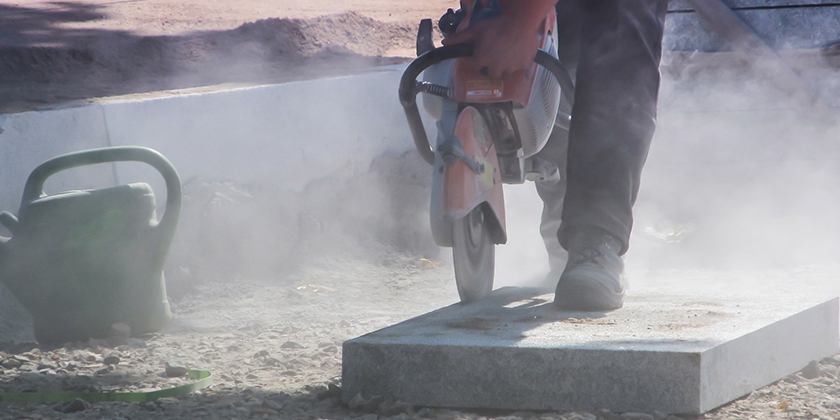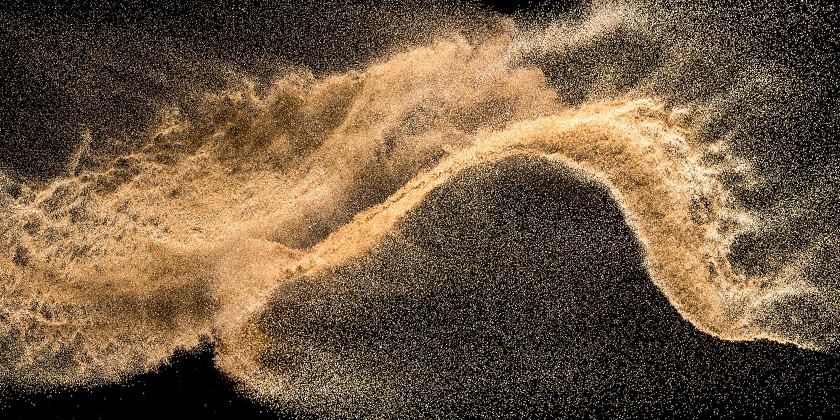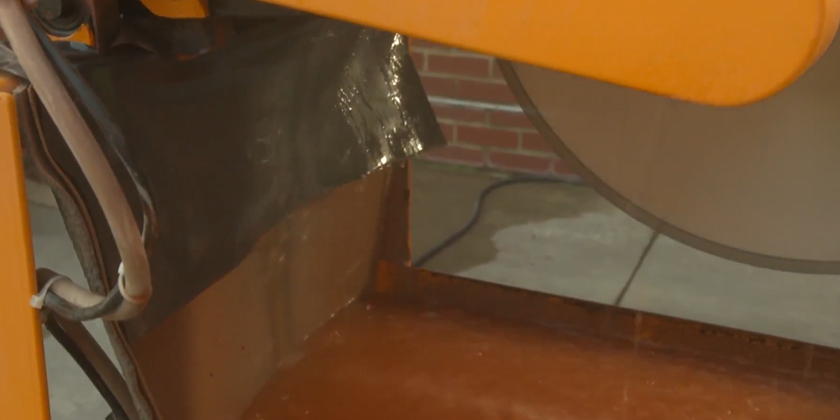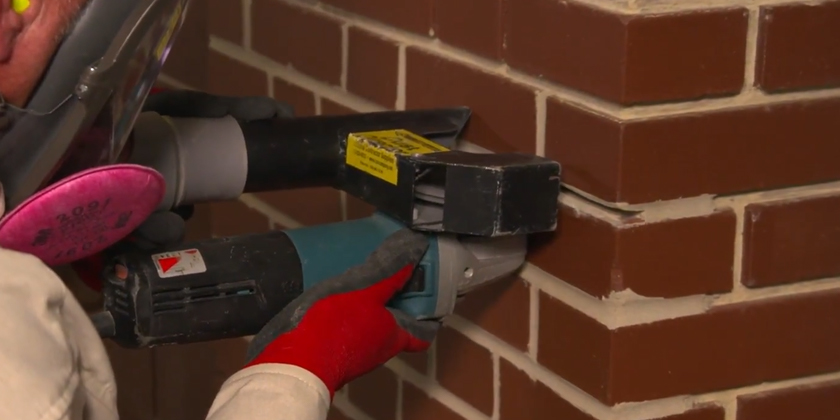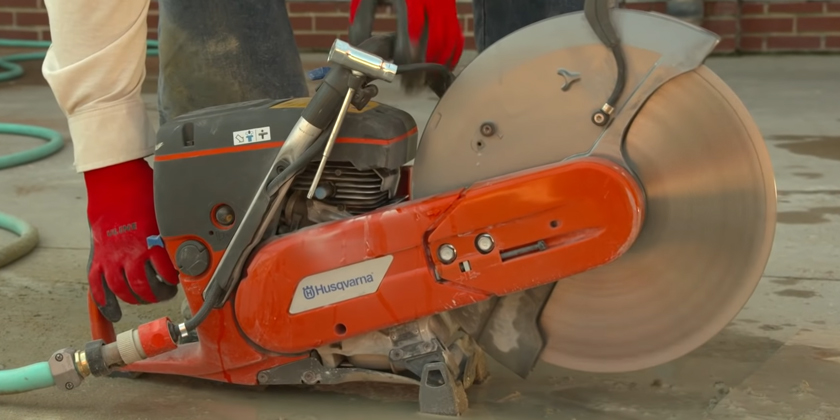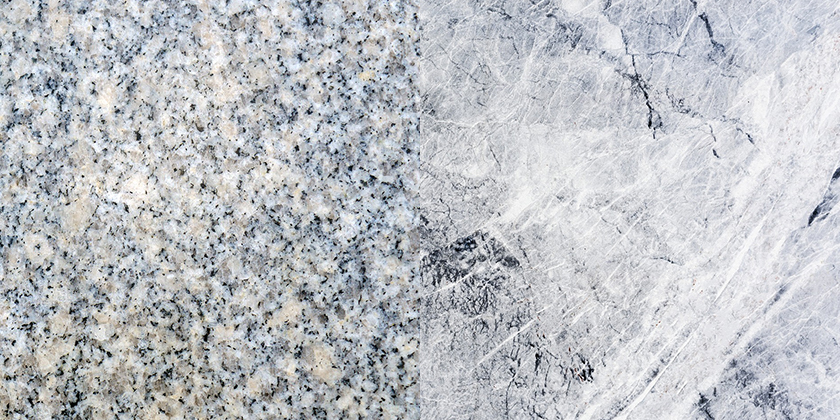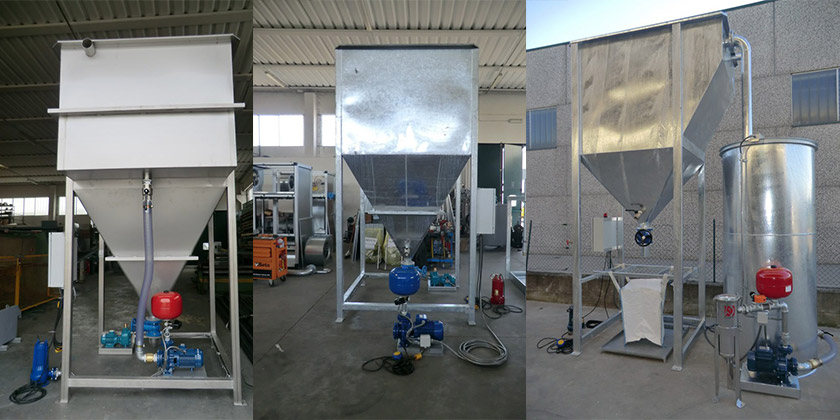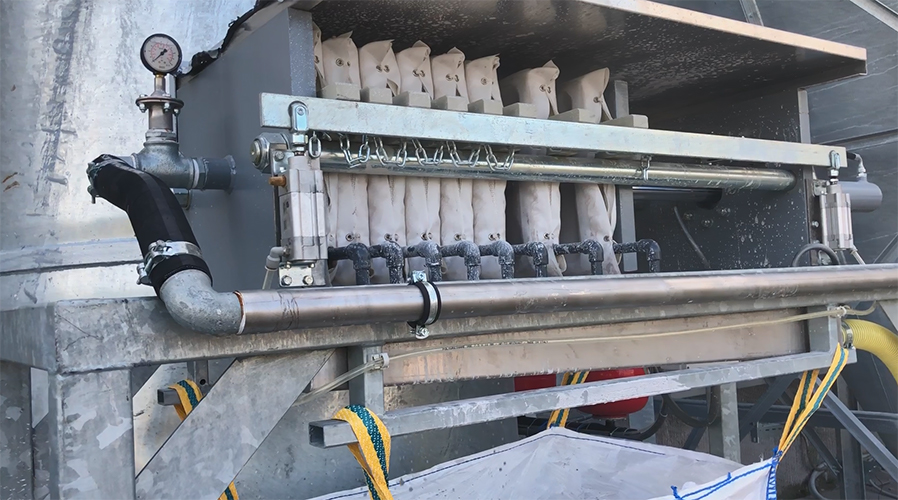Non-mortar Removal Handheld Grinders
The Occupational Safety and Health Administration requires employers to limit workers exposure to respirable crystalline silica on the job. Hence, the video below and the chart on this page show the standards and requirements necessary for tasks performed using non-mortar removal handheld grinders. Additionally, using these standards helps you with handheld grinders for polishing stone and exposure control.
When used properly these methods effectively limit workers’ exposure to potentially harmful silica dust. The video below shows a method for reducing exposure while using handheld grinders for working stone. However, the same principles apply to any power tools that generate silica dust. In fact, many tools used for cutting and grinding various stone products require safety methods for reducing dust. This is especially true of high dust producing equipment.
Operating Non-mortar Removal Handheld Grinders – Dust Collection
In order to comply with the table below, dust collection systems and techniques must be used in the immediate work environment to effectively remove dust form the area in certain conditions. Dust collection effectively remove dust as it is generated by grinding. Additionally, the dust collector must remove dust at an approved rate in line with the length of time the worker is performing the grinding.
The dust collector must also have a filter that with 99% or greater efficiency and a cyclonic pre-separator or filter cleaning mechanism. Accordingly, the cyclonic pre-separator and filter cleaning mechanisms prevent debris from building up on the filter and hindering the dust collector’s effectiveness.
Operators Checklist
Operators regularly check the machine’s condition. They also perform regular maintenance to non-mortar removal handheld grinders to keep them in good working order. In fact, maintenance tasks are often recommended by grinder and dust collector manufacturers. And these often include the following:
- Clean and replace filters as needed.
- Do not overfill the waste container.
- Follow a specific maintenance schedule.
- Regularly check the dust collection system and look for signs of damage.
- Make sure the hose connecting the tool to the vacuum is intact and without kinks or tight bends.
Operators regularly perform these cleaning and maintenance tasks. Additionally, they ensure that the equipment performs at it best.
Stone Grinders and Integrated Water Delivery
Many handheld grinders have a built-in water delivery system that applies water to the grinding surface. Additionally, this water effectively controls dust when grinding materials containing crystalline silica. Hence, to comply with the requirements shown in the table below, the system must:
- Have water delivery integrated with the grinder.
- Continuously feed water to the grinding surface.
Water System Maintenance
It is important to correctly maintain the water delivery system. This is so the grinder stays in good working order and performs well. Furthermore, dust is not effectively controlled when the water delivery system is not functioning properly. In fact, with regular use the water delivery system can come to have one or more of the following issues:
- Pinched hoses.
- Cracked or leaky hoses.
- Clogged water reservoirs.
- Leaking or clogged nozzles.
Potential problems can develop with the water delivery system of regularly used stone grinders. So it is important to regularly check the following:
Grinder Water Delivery System Checklist
- Remove any clogs.
- Check connections.
- Inspect nozzles for damage.
- Check that the water supply is sufficient.
Grinder Maintenance
The grinder must be operated and maintained correctly. Therefore it should be used according to the manufacturer’s instructions to minimize dust emissions. Manufacturer’s instructions usually specify the following requirements for operation:
- The amount of water to apply.
- Inspection for wear and damage.
- A maintenance schedule to follow.
- Type and diameter of the grinding wheel to use.
In addition to reducing and minimizing silica dust, any slurry that is produced by the grinder should be effectively cleaned up. Thus, preventing the slurry from drying out and allowing the the silica to become airborne. Furthermore, managing slurry through the use of a stone water treatment plant is effective. This is because they are designed to filter water and reduce costs for disposal.
Requirements Table
| Specified Exposure Control Methods When Working With Materials Containing Crystalline Silica |
| Equipment / Task |
Engineering and Work Practice Control Methods |
Required Respiratory Protection and Minimum Assigned Protection Factor (APF) |
| ≥ 4 hours/shift |
> 4 hours/shift |
| (xii) Handheld grinders for uses other than mortar removal |
For tasks performed outdoors only: |
None |
None |
| Use grinder equipped with integrated water delivery system that continuously feeds water to the grinding surface. |
| Operate and maintain tool in accordance with manufacturer’s instructions to minimize dust emissions. |
| OR |
| Use grinder equipped with commercially available shroud and dust collection system.
Operate and maintain tool in accordance with manufacturer’s instructions to minimize dust emissions.
Dust collector must provide 25 cubic feet per minute (cfm) or greater of airflow per inch of wheel diamiter and have a filter with 99% or greater efficiency and a cyclonic pre-separator or filter-cleaning mechanism:
|
|
|
| – When used outdoors. |
None |
None |
| – When used indoors or in an enclosed area. |
None |
APF 10 |
Handheld stone grinders generate silica dust. Therefore, they require proper use and maintenance. Rather than simply using the equipment without looking for potential issues, operators inspect and maintain these tools. As a result, airborne silica dust is kept to a minimum.


